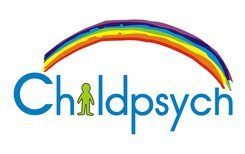Play Therapy: An Introduction
Play therapy has been around for a long time. It is aimed at adults and children alike. As a type of therapy that suggestively involves actual playing, it has recently been geared towards various disorders, such as attention-deficit hyperactivity disorder (ADHD). This blog explores what this type of therapy actually is, while taking a look at some of its benefits.
What is Play Therapy?
In summary, it allows clients to explore play during their sessions instead of merely speaking and answering questions about what bothers them. It is a common method utilised mostly with children, and is a type of therapy that has been around since the early 1930s within the field of psychiatry. Its value was seen in the fact that children revealed more of themselves when doing things that they enjoy. Child play therapy is considered a unique way of being present with a child and trying to aid their developmental growth through play itself – often, play is the best way that children know how to express themselves honestly.
When Is It Used?
While play therapy is for people of all ages, it is mostly used with children aged 3-12 years old. Circumstances where it is utilised include:
- Aggressive behaviour;
- Trauma;
- Anxiety;
- Eating disorders;
- Abnormal behaviour within school;
- Issues relating to family events, such as the death of a family member, divorce, etc.
- And more.
What Are the Benefits of Play Therapy?
Like with many therapeutic interventions, there tends to be a bit of hesitation at first. However, as trust between the client and therapist tends to develop, the client becomes more comfortable, verbal and a lot more creative in their play. An added benefit to this intervention is that it can improve gross motor skills and the use of language, particularly within children.
Some benefits include:
- An improvement in social skills;
- Stronger family bonds;
- A feeling of self-respect and respect for others;
- Developing coping mechanisms;
- Creative problem-solving skills are developed; and
- An outlet for the expression of one’s feelings and experiences.
Children and adults tend to communicate and convey meaning very differently. While it depends on the age and developmental stage of a child, many children do not have the linguistic ability to express how there are feeling or what they are thinking.
Sometimes, it’s possible that he or she may not have an adult they can trust to communicate with. Other times, it may be that the adult misinterprets a child’s non-verbal or verbal cues. This is where a therapist is important for bridging the communicative gap. By stepping into the world of the child, the therapist relieves the child of having to grapple to communicate within the adult world.
To find out more about play therapy, stay tuned to this blog series where we continue to divulge the intricacies of play. Remember, every therapist has different psychological interventions and methodologies.
To make an enquiry, please get in touch with me for more information.

